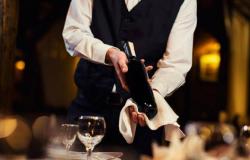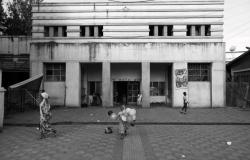MATERA – Faith and devotion. But also tradition and reconstruction. The feast in honor of Maria Santissima della Bruna is not a simple religious occasion, but in all phases, from the beginning of the Novena, on 23 June, until 2 July, it is the manifestation of “the identity of a people on the move, who follows in Mary’s steps.” For Mgr. Antonio Giuseppe Caiazzo archbishop of the diocese of Matera – Irsina and bishop of Tricarico, “you cannot separate Matera from Bruna. Behind this celebration there is a strong sense of belonging and identity of a people which is also emerging at the diocesan level. The pandemic suggested me to bring the Painting of the Madonna of the Shepherds to the various parishes of the city, where everyone could go to venerate the Image of Mary. Then the choice to bring the Painting also to the Municipalities of the archdiocese which in recent years has been recognizing the Madonna della Bruna as its Protector. A novelty that is highlighting that the people who venerate the Patron Saint of the city of the Sassi are increasing today”.
An increasingly broad participation, also due to immediate, social communication. In this, technology has proven to be a tool that allows us to reach users, not only from Lucania and Matera, who reside in all parts of the world, who in this way can immerse themselves in the sounds, colors and suggestions of a festival that is celebrated in Matera for 635 editions now. “A communication – adds the monsignor – which allows a message to reach beyond borders. I think of the many of our immigrants who thus have the opportunity to experience the various phases of the celebration, or of the tears on people’s faces when they participate in the holy mass broadcast live, in the procession of the Shepherds, in the moment in which the Madonna is placed on the triumphal chariot to reach Piazza Duomo, and his return to the Cathedral. These are particular moments that we need to communicate externally.” An aspect that has undergone an important evolution over time is the great participation of young people in the different phases of the festival, from the procession of the shepherds to the tearing of the cart. “The pandemic has taught us a lot – he underlines – when we started celebrating morning mass in Piazza Duomo again, we focused on young people. They must be the ones to animate the function with songs, they must be the new shepherds who walk the streets of the city. And it is thanks to this participation that the tradition will continue. If they are the ones who take over the reins of the celebration, and strengthen themselves in this faith, grasping its profound meaning, then it will be possible to continue peacefully and this renewal will guarantee the continuation of the celebrations over time”. The festival is also the “strazzo” of the float, the final act of a long day, which takes place in Piazza Vittorio Veneto. But what meaning does it have for the church? “After years of participating in the celebration, I found meaning in the last cry I make at the end of the celebrations. In these words there is the hope of being able to make this journey of faith better and better from year to year. The act of destroying the cart, the search for a piece to keep or send in an envelope to loved ones who live outside, takes on the meaning of reconstruction. Every year we must “rebuild” ourselves in the light of the evangelical teaching that we choose from year to year as the theme of the float, and that Our Lady reminds us of. And this rebuilding increasingly becomes the true identity of a believing people, who have faith, who trust in God and in his Mother.”





